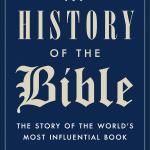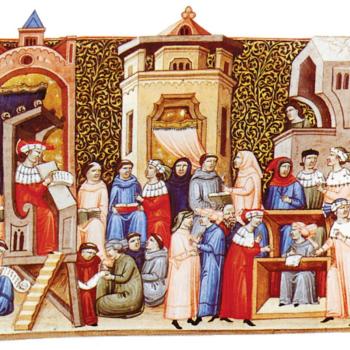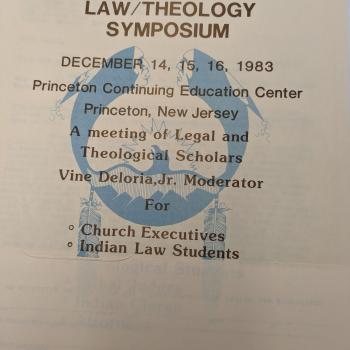Not much more needs to be said on the conflict between Oberlin College and Gibson’s Bakery and on the court decision that settled it. Something remains to be said about a former Oberlin president’s read of this series of events.
The basics of the recent case: the treatment of three African-American students in a 2016 Gibson’s Bakery shoplifting incident generated ferocious protest from Oberlin students, supported by the school’s administration, alleging that the bakery was racist. Gibson’s sued. Last month a jury awarded $44 million in damages, a figure the judge reduced to $25 million.
The case touched many sensitive points: America’s polarized political culture, free speech on campuses, limits of litigiousness. Interesting, too, has been the way this small Midwestern liberal-arts college seems to provoke outsized reaction, positive and negative. Critics and champions both notice that preference for moral absolutes seems to be in Oberlin’s DNA.
Founded in 1833 by a minister and a missionary, the school was named in honor of Alsatian pastor and reformer John Frederick Oberlin. Charles Finney served as the college’s second president. Revivalist, perfectionist, and opponent of slavery, Finney was among key cultural influencers in the first half of the nineteenth century—and was a proponent of the very anxious bench from which this channel claims its name.
As former Oberlin President S. Frederick Starr sees it in a Wall Street Journal piece, the spirit of Finney is at odds with that of the pastor Oberlin. John Frederick Oberlin encouraged harmony and understanding among those with different opinions, Starr recalls, while the absolutist Finney was likelier to identify his own righteousness at cost of the other’s villainy. Starr writes, “Few if any students, administrators or trustees know anything about Finney, and today’s zealots are militantly secular. Yet they concur with each other and with Finney on the need for enemies.” Starr explains:
The institution itself seems to have embraced the extremist doctrine that every “evil” thus identified must be destroyed so that society can enter an age of bliss.
Pastor Oberlin would have been appalled. But the founder of Oberlin College, Charles Grandison Finney (1792-1875), would not have been. Finney, a fierce enemy of Calvinism and the sparkplug of the so-called Second Great Revival, believed human beings could be perfected if only specific evils and their perpetrators could be stamped out. In this frightening doctrine, Finney manifested what the University of Virginia psychiatrist Vamik Volkan called “the need to have enemies and allies.”
Now, plenty of thoughtful people in the nineteenth century and today might find objectionable Finney’s theology, his break with predestinarian doctrine and his exhortations that sinners do something to lay hold of their own salvation. But it’s a strange way for a twenty-first century commentator in a business-minded newspaper to attack Finney, on grounds that he was hostile to Calvinists. Further, scholars might disagree about the scale and scope of the Second Great Awakening, but neither Finney nor those waves of conversion and reform are properly summarized as a narrow-minded stamping out of specific evils.
One even may agree with Starr that human perfectibility is a questionable prospect and that stamping out of particular evils won’t solve all problems generated by greed, decay, and misunderstanding. But if we recall that the “specific evil” Finney’s Oberlin most vociferously opposed was slavery, we might concede that that deserved stamping out. At first I surmised that perhaps Starr was put off by the general range of moral uplift mid-nineteenth century campaigners addressed, but wasn’t thinking about slavery directly. But he does address slavery directly:
In its early years Oberlin College found many dragons to slay. Slavery was high on the list. John Brown’s father was an Oberlin trustee, and the college briefly employed Brown himself before he unleashed his war of terror on Kansas. Other dragons included “the demon drink” (the Anti-Saloon League was founded in Oberlin), art (one early Oberlin president, after visiting the Louvre, vowed never to enter an art museum again), and those heathens world-wide who resisted the efforts of the legions of missionaries sent from Oberlin. Book burning was not unknown in early Oberlin’s early days.
Some efforts to end slavery might be more effective than others, slavery opponents yet could be self-righteous or even racists themselves. But grouping these evils together as equivalent and associated ones miscasts the character of each. Dismissing them whole as “dragons to slay” is blamably glib. Haters of paintings and burners of books may be criticized, but in the piece, Starr hardly comes off as champion of arts and letters.
Starr wants us to appreciate Oberlin by recognizing that not all its loyal sons and daughters are those flame-hot moralizing types. He urges that we distinguish two separate cadres inheriting the Oberlin mantle. He describes the kind he favors, remarking, “By the early 20th century, Finney’s dour legacy had waned and the college embraced modern learning in all its forms.” (Dour!) By the twentieth century, Oberlin could take credit for having educated paragons of “modern learning.”
Graduate Robert Millikan earned a Nobel Prize for physics and founded Cal Tech, while Roger Sperry won a Nobel in medicine for discovering the functions of the brain’s hemispheres. Countless other “Obies” achieved distinction in science, music, literature and business. Typical was Charles Martin Hall, who invented the electrolytic process for refining aluminum and founded Alcoa. Thus there exist two radically different Oberlins: the gloomy sectarian training ground inspired by Finney and the one that affirms modern learning, thought, music and art.
Strikingly, all of the Oberlin heroes Starr names come from the sciences, suggestive of the dichotomy he imagines in such institutions of higher education. On one side sit the fuming religious (he elsewhere says “squinty-eyed”) haters of life’s refinements and curiosity, and on the other, smart “modern” people who go to college to learn a lot about how the world actually works and make it better, garnering wealth and fame in the process. These two poles look different in reality. Starr obscures the legacy of scholarship and service descending from colleges founded, like Oberlin, by Christian-minded men and women in the nineteenth century. Not to be underestimated is Oberlin’s founding, radical assumption about enrollment. Pretty much singular on planet Earth for so doing in the nineteenth century, Oberlin opened its doors co-ed, men and women both eligible for education, and admitted black students two years after its founding. Furthermore, modern—for Starr perhaps meaning from the 20th or 21st century?—academics have shown themselves not immune from dogmatism and prejudice. And the achievements of a college or university are not to be measured only by technical skills and the wealth these earn.
The former president wonders,“What can Oberlin do to reclaim its better self?” American colleges and their students can be less quick rushers to judgment, can be more accommodating of nuance, and can be more hospitable to those who disagree. But a “better self” would be forfeited, not gained, by imagining college primarily as a place where people tolerate each other in order to earn fame and learn a trade more efficiently.













